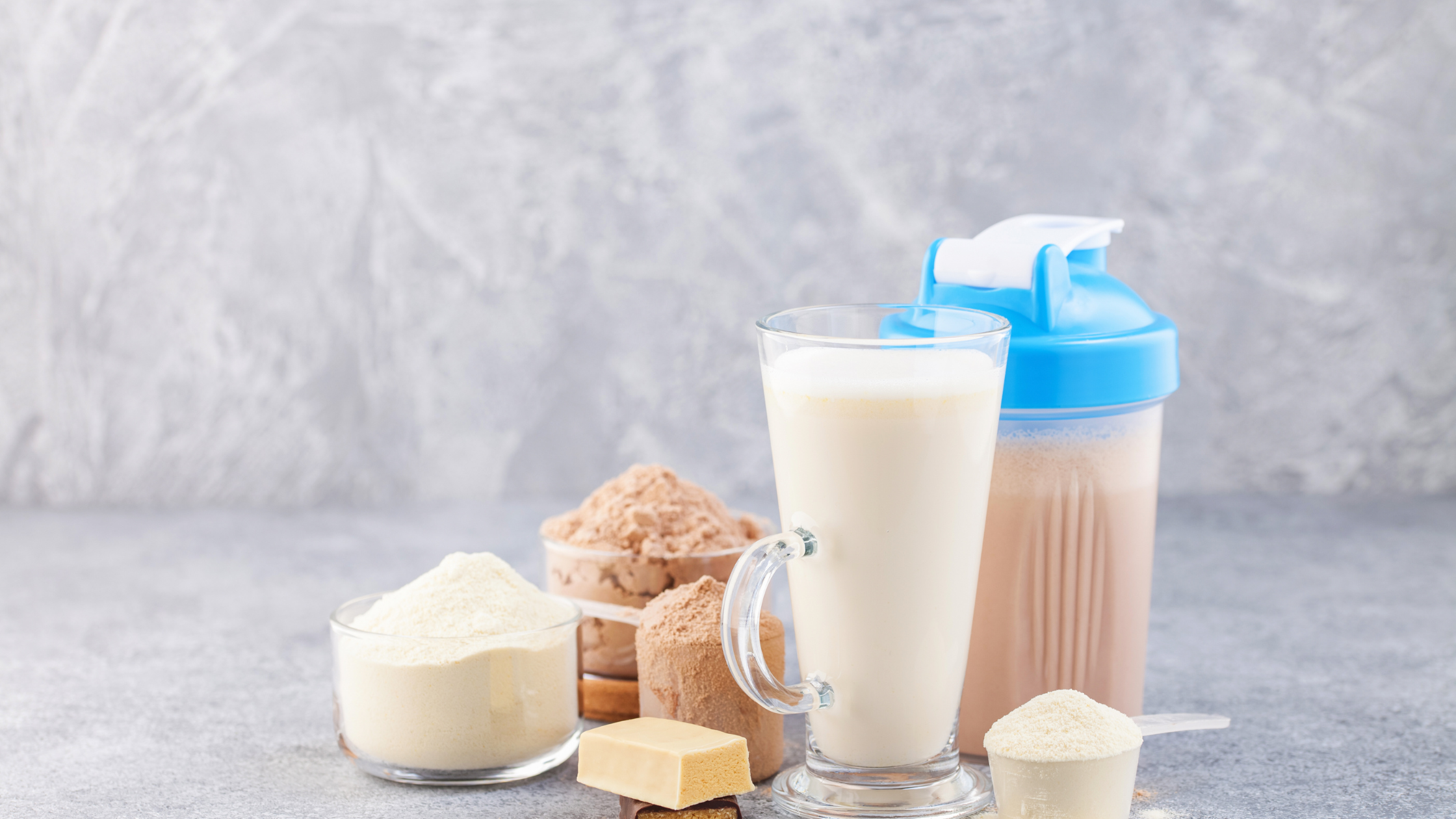
The benefits of whey aren’t just for those of us in our golden years. A study in the Journal of Applied Physiology (September 2009) highlighted the benefits of whey on muscle growth when compared to the consumption of soy or casein after an exercise session in young men. Whey was by far the most effective in increasing muscle mass. Soy was the second most beneficial when taken following exercise. The researchers concluded that the difference in results could be a reflection of how quickly proteins can be digested. Casein is the most favourable slow-release protein, which is why it is often taken at bedtime as an aid to increase muscle mass, according to recent research from Frontiers in Nutrition (March 2019).
Interestingly, both casein and whey are complete proteins, but their amino acid compositions are different. Glutamine and leucine play important roles in muscle protein metabolism, yet casein contains less of these, while whey contains more. Therefore, it seems the digestion rate of the protein may be more important than the amino acid composition.
In athletes supplementing their diets with additional protein, casein has been shown to provide the greatest long-term gains for protein synthesis. Whey protein, however, has a greater initial advantage for protein synthesis. Again, these differences are related to their rates of absorption. It is likely that a combination of the two could be beneficial; or, perhaps, a smaller but more frequent ingestion of whey could prove to be of value.
Which Whey Should You Choose?
Whey is a general term that typically denotes the translucent liquid part of milk that remains after the coagulation and curd removal that occur in the making of cheese. From this liquid, whey proteins are separated and purified using various techniques that yield different concentrations of whey protein. Whey is one of the two major protein groups from cow’s milk, accounting for 20 percent of the milk, while casein accounts for nearly 70–80 percent of the total protein in milk and is responsible for its white colour. It is the most commonly used milk protein in the industry today. Similar to whey, casein is a complete protein and also contains the minerals calcium and phosphorus.
A cool aspect of casein is the way it is digested and absorbed. It forms a “blob,” or gel-like clot, in the stomach, which allows the slow release of amino acids into the bloodstream, taking up to several hours, making it the most favourable choice for consumption at bedtime. This provides better nitrogen retention and utilization by the body, aiding muscle growth and repair.
All the constituents of whey protein provide high levels of essential and branched chain amino acids that play a vital role in maintaining tissue and preventing catabolic actions during exercise. It’s also a rich source of antioxidants and vitamins and minerals. In addition, whey protein contains a number of other proteins that positively affect immune functions such as antimicrobial activity.
Here are more specific benefits of whey:
• The amino acids in whey protein produce bioactive peptides such as lactoglobulin, alpha-lactalbumin, bovine serum albumin, immunoglobulins, glycomacropeptides, and lactoperoxidase, which are intensely immune-enhancing.
• It has been proven to be the best protein to support muscle growth.
• It has anabolic effects due to its high leucine content and the fact that it increases the anabolic hormone insulin, which makes it very beneficial after a workout.
• It is the most readily digested and absorbed protein.
• It reduces fat and maintains muscle mass, especially when consumed in the isolate form.
• It helps to reduce LDL (“bad”) cholesterol.
• It is known to improve insulin resistance.
• It impacts cortisol balance and is shown to reduce cortisol in the evening when consumed in mid-afternoon.
• It helps regulate appetite, and studies have shown it can lead you to consume less in the following meal when taken in mid-afternoon.
• It can help to lower blood pressure.
• It reduces stress and depression symptoms.
• It provides a source of cysteine, a precursor of the potent antioxidant glutathione.
So, there you have it; whey forms up to be the most favorable protein we have available to us – and the source you choose matters! It should be hormone free and minimally processed – like Dream Protein or Fit Food Lean Whey Chocolate that also includes a fibre supplement.
When choosing your whey protein, it is important to consider your fitness goals, whether you are trying to gain muscle mass or reduce fat and, at the same time, maintain muscle mass.
Selecting Your Whey Protein Supplements
| Component | Whey concentrate | Whey isolate | Whey hydrozylate |
| Notes on Form | The least processed form of whey; considered the lowest-quality type of whey protein, but the most affordable—and, some say, the tastiest, too | The purest of whey protein, highly absorbable and the form suitable for those who are lactose-intolerant | Contains enzymatically pre-digested amino acids which allow for this form to be absorbed extremely quickly—within a few minutes of consumption |
| Processing Method | Filtration | Ion exchange or microfiltration at low temperatures | Hydrolyzation process |
| Best Used For | Gaining muscle mass | Reducing fat and protecting muscles after a workout | Gaining muscle mass fast, and the best choice for rapid absorption when desired, such as on rising and before or after training |
| Protein (%) | 25–89 | 90+ | 90+ |
| Lactose (%) | 10–55 | 0.5 | <1 |
| Milk Fat (%) | 2–10 | 0.5 | <1 |
Reference: Adapted from Journal of Sports Science and Medicine (September 2004)